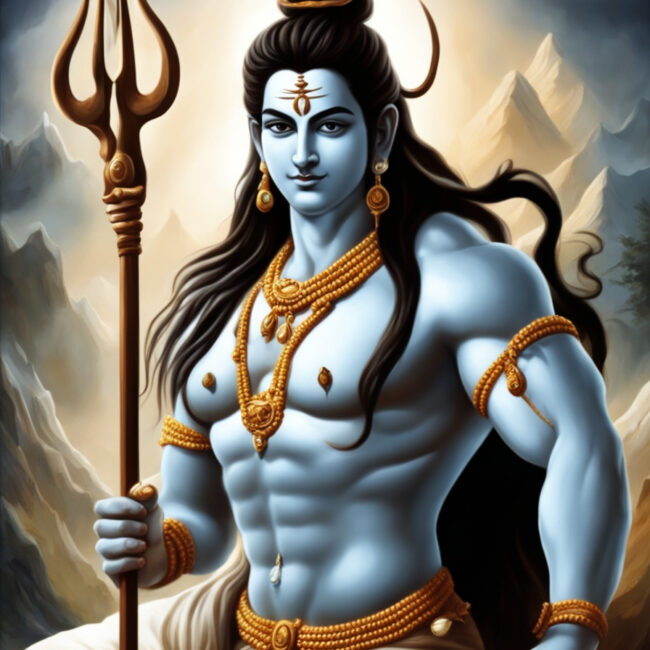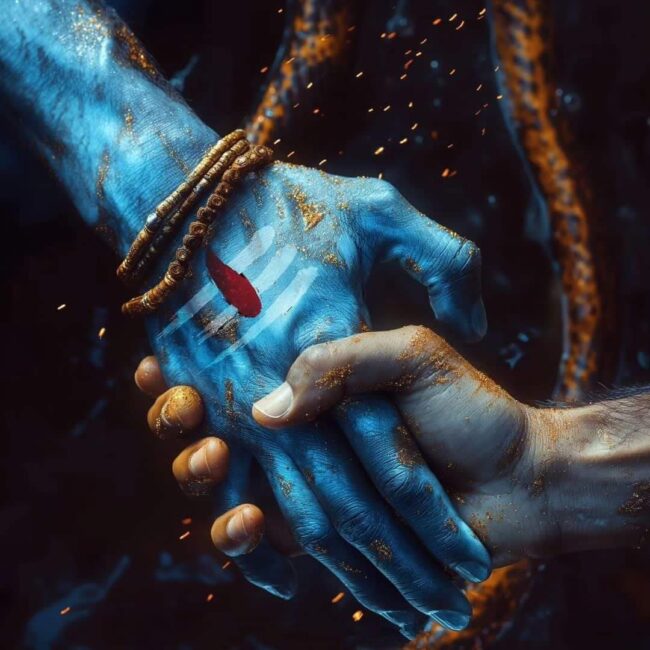In the vast tapestry of Hindu mythology, few figures evoke as much intrigue and reverence as Lord Shiva. Known as the destroyer and the transformer, Shiva is one of the principal deities in Hinduism, embodying the paradoxical nature of creation and destruction, chaos and tranquility. But who is Lord Shiva, beyond the myths and legends? Let’s embark on a journey to unravel the mystique surrounding this enigmatic deity.
The Iconography of Shiva
Visually, Shiva is often depicted as a towering figure adorned with a crescent moon on his matted hair, a snake coiled around his neck, and a third eye on his forehead symbolizing wisdom and insight. His blue throat, resulting from the consumption of poison during the churning of the cosmic ocean, signifies his role as the ultimate protector of the universe. He is typically shown with a trident (trishula) in hand, representing his authority over the three aspects of time – past, present, and future.
The Divine Consort: Shiva and Parvati

Central to Shiva’s mythology is his relationship with his divine consort, Parvati. Their union symbolizes the harmony of masculine and feminine energies, a cosmic dance that sustains the universe. Parvati is often depicted as the gentle and nurturing counterpart to Shiva’s wild and untamed nature, embodying qualities of love, devotion, and strength.
Shiva as the Supreme Yogi
One of the most intriguing aspects of Shiva is his role as the supreme yogi. He is often depicted in deep meditation, detached from the worldly affairs yet fully engaged in the cosmic dance of creation and destruction. Through his ascetic practices and profound meditation, Shiva transcends the limitations of the physical realm, attaining a state of oneness with the universe.
The Destroyer and the Transformer

While Shiva is often referred to as the destroyer, his role extends far beyond mere destruction. He represents the eternal cycle of death and rebirth, the transformative power that paves the way for new beginnings. In Hindu cosmology, destruction is not an end but a necessary precursor to creation, and Shiva embodies this cyclical nature of existence.
Shiva Worship: From Temples to Sacred Rituals
Throughout India and beyond, devotees of Shiva gather in temples and sacred spaces to offer prayers, perform rituals, and seek blessings from the divine. MahaShivaratri, the great night of Shiva, is one of the most significant festivals dedicated to honoring Lord Shiva’s presence and his cosmic dance of creation and destruction.
In Conclusion
Lord Shiva, with his multifaceted persona, continues to captivate the hearts and minds of millions around the world. Beyond the myths and legends, Shiva embodies the timeless principles of balance, transcendence, and transformation. As we delve deeper into the mystique of Lord Shiva, we unravel not just the secrets of the universe but also the eternal truths that resonate within each of us.








